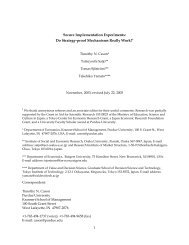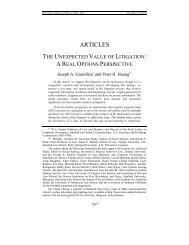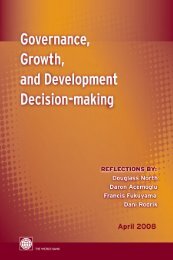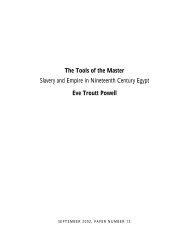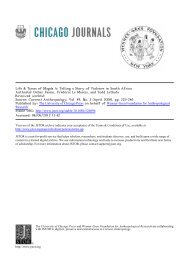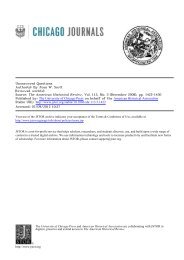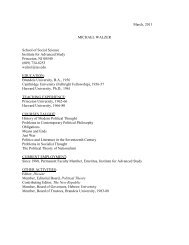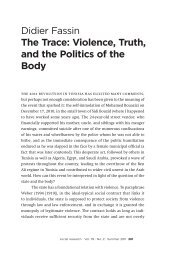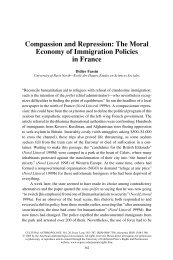Peter H. Huang Harold E. Kohn Chair Professor of Law James ...
Peter H. Huang Harold E. Kohn Chair Professor of Law James ...
Peter H. Huang Harold E. Kohn Chair Professor of Law James ...
Create successful ePaper yourself
Turn your PDF publications into a flip-book with our unique Google optimized e-Paper software.
Emotional Impact Analysis<br />
vast amount <strong>of</strong> empirical evidence that stringent SEC regulation facilitates capital market development<br />
and economic growth. 217 It should be clear that EIA can suggest and justify regulations that CBA might<br />
not because EIA but not CBA takes into account such positive emotional impacts as investor confidence<br />
and trust. Symmetrically EIA can prevent and eliminate regulations that CBA might not because EIA but<br />
not CBA takes into account such negative emotional impacts as anxiety and fear. An example <strong>of</strong> a policy<br />
that might fail EIA are non-specific terrorist alerts that only serve to incite hysteria and panic among the<br />
public at large that more than <strong>of</strong>fsets any unemotional regulatory gains in terms <strong>of</strong> detecting and<br />
preventing terrorist attacks. Financial regulators engaging in EIA should not let other people’s or their<br />
own preconceived notions about whether there is too much or too little financial regulation overall dictate<br />
EIA <strong>of</strong> specific proposed rules and regulations. Instead, a virtue <strong>of</strong> EIA is that it has a potential to and<br />
should provide a principled and unbiased tool for evaluating alternative regulatory policies.<br />
C. Relevance <strong>of</strong> Criticisms <strong>of</strong> Cost-Benefit Analysis in Non-Financial Regulation<br />
Some people feel that routinely utilizing CBA for making policy decisions about environmental<br />
regulations is disturbing and inappropriate for a host <strong>of</strong> reasons. Applications <strong>of</strong> CBA to environmental,<br />
health, and safety regulations have understandably generated much contentious debate and heated<br />
controversy. 218 Some believe that, as is also possible with an increasingly influential Precautionary<br />
Principle, 219 certain politicians and interest groups utilize CBA for delay, inaction, and regulatory<br />
216 Elizabeth F. Brown, E Pluribus Unum – Out <strong>of</strong> Many, One: Why the United States Needs a Single Financial<br />
Services Regulator, 14 U. MIAMI BUS. L. REV. 1 (2005).<br />
217 Frank B. Cross & Robert A. Prentice, Economies, Capital Markets, and Securities <strong>Law</strong> U <strong>of</strong> Texas <strong>Law</strong>, <strong>Law</strong> and<br />
Econ Research Paper (2006), available at http://ssrn.com/abstract=908927 (surveying this literature and contributing<br />
its own empirical study).<br />
218 See generally ACKERMAN & HEINZERLING, supra note 83; Robert H. Frank, Why Is Cost-Benefit Analysis So<br />
Controversial, 29 J. LEGAL STUD. 913 (2000); Jeffrey L. Harrison, Piercing Pareto Superiority: Real People and the<br />
Obligations <strong>of</strong> Legal Theory, 39 AZ. L. REV. 1 (1997); Jeffrey L. Harrison, Egoism, Altruism, and Market Illusions:<br />
The Limits <strong>of</strong> <strong>Law</strong> and Economics, 33 U.C.L.A. L. REV. 1309 (1986); JORDAN & HARRIS, supra note 199, at 382-84<br />
(2005); MARK KELMAN, Is the Kaldor-Hicks Position Coherent?, in A GUIDE TO CRITICAL LEGAL STUDIES 141-50<br />
(1987); Duncan Kennedy, Cost-Benefit Analysis <strong>of</strong> Entitlement Problems: A Critique, 33 STAN. L. REV. 387, 422-45<br />
(1981); and Symposium, Cost-Benefit Analysis: Legal, Economic, and Philosophical Perspectives, 29 J. LEGAL<br />
STUD. 837 (2000).<br />
219 See e.g., Mike Feintuck, Precautionary Maybe, But What’s the Principle? The Precautionary Principle, the<br />
Regulation <strong>of</strong> Risk, and the Public Domain, 32 J.L. & SOC. 371 (2005). See generally CASS R. SUNSTEIN, LAWS OF<br />
FEAR: BEYOND THE PRECAUTIONARY PRINCIPLE (2005). But see Dan M. Kahan et al., Fear and Democracy or Fear<br />
36



